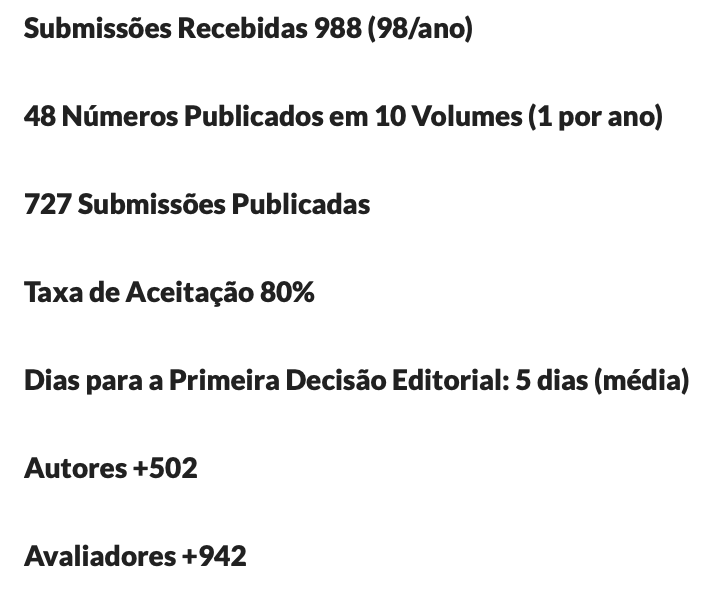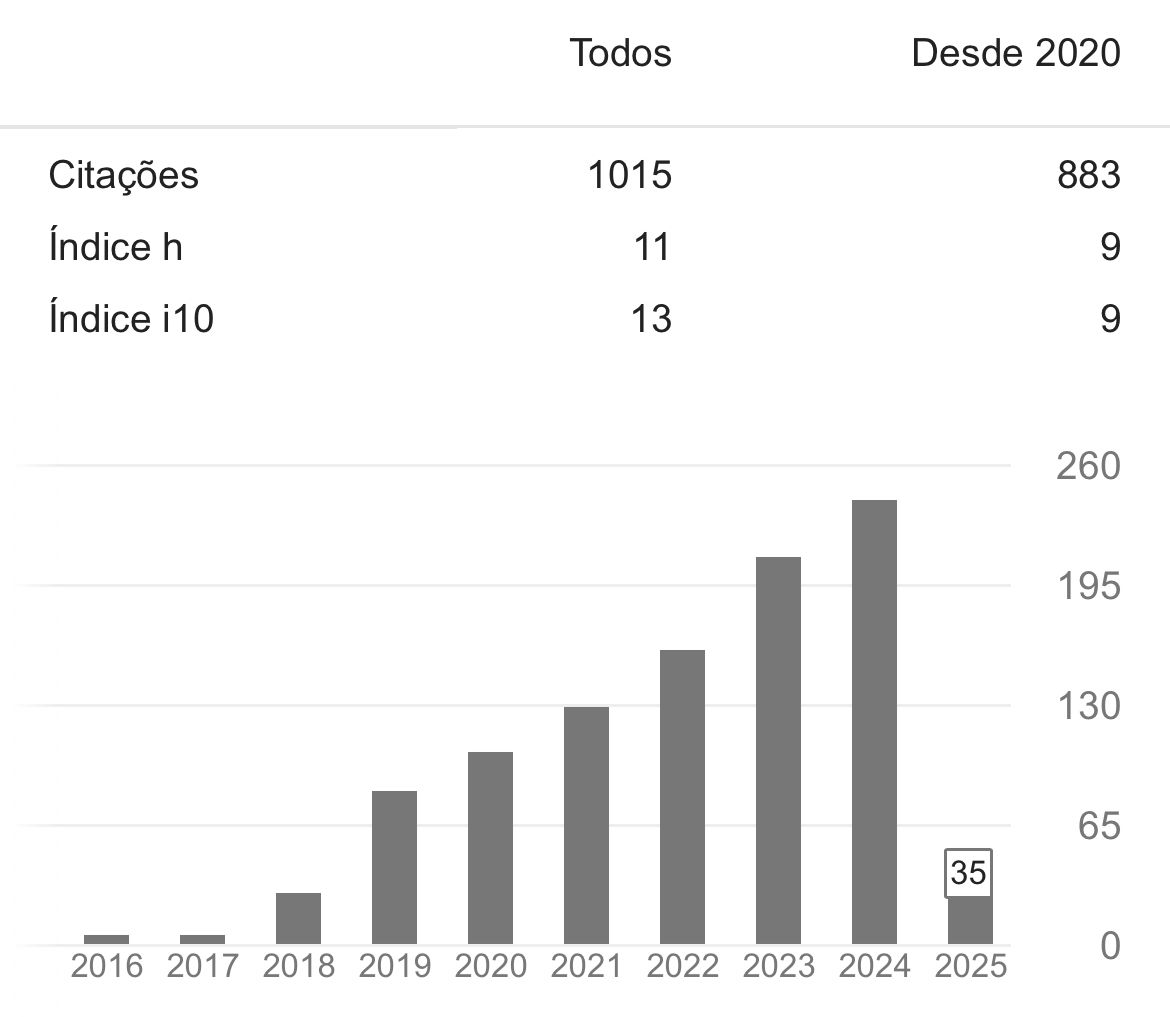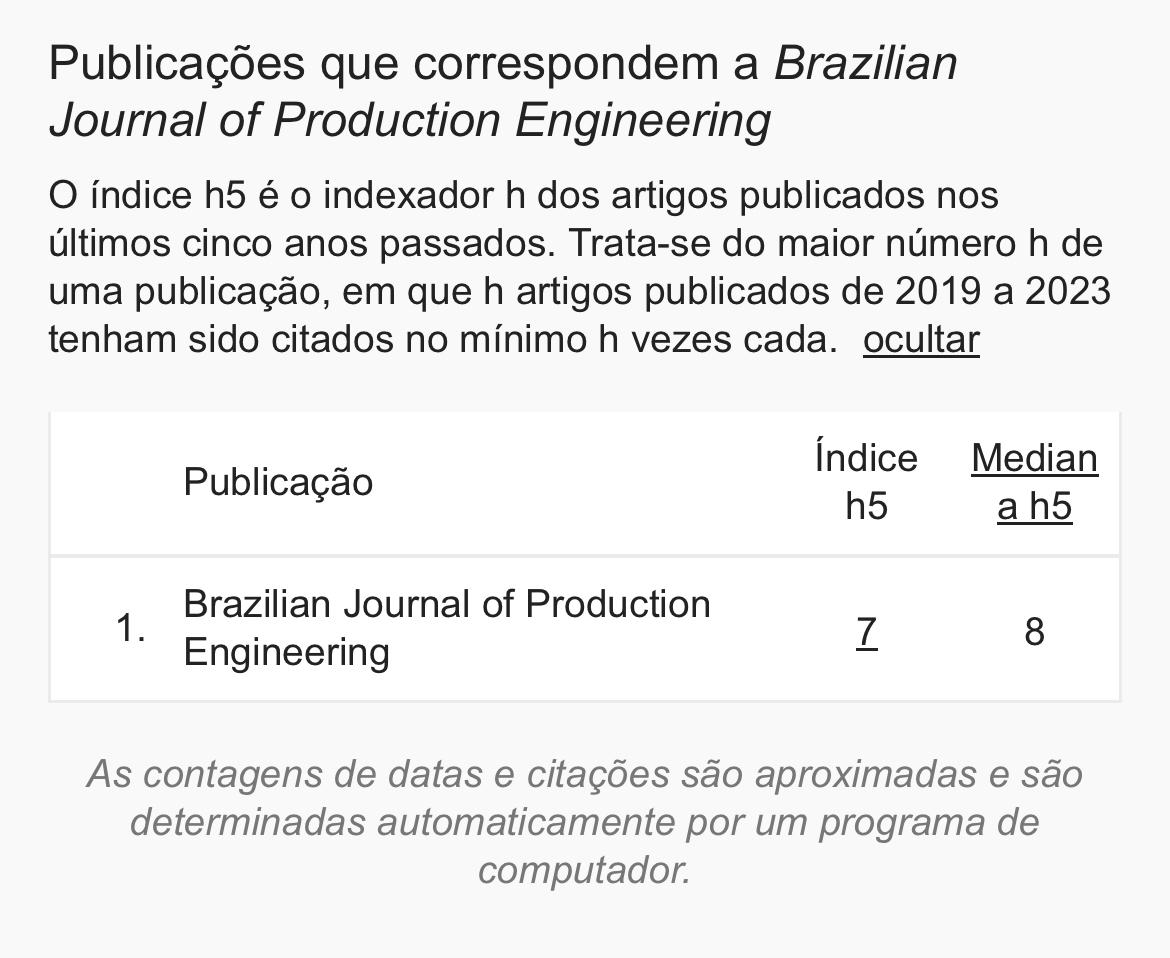Review of studies on ammonia recovery via struvite precipitation
DOI:
https://doi.org/10.47456/bjpe.v6i9.34007Keywords:
Struvite, wastewater treatment, reviewAbstract
The precipitation of struvite (MgNH4PO4.6H2O), integrated with the treatment of effluents, is environmentally and economically attractive. In this review, the most cited publications (of the past 20 years) dedicated to recovering nutrients from effluents via struvite precipitation were identified. The operating conditions (pH, the proportion of reagents, reaction time and agitation conditions, and raw materials used) and results achieved were examined, aiming to identify the factors controlling the nutrient recovery process's efficiency. To this end, a review was carried out on the Web of Science database, with the terms (struvite, ammonium, recovery, nutrient, treatment) to select the articles. The relevance and timeliness of the theme were noticed by many recent publications. In general, the best results were obtained with pH 8.5-9.0 and a slight excess of Mg2+, from magnesia (industrial MgO). Which, in addition to increasing the yield, reduces the cost of the process. In contrast to the tests with synthetic effluents, studies with real effluents highlight that the presence of K+ (Ca2+ and HCO3-) must be considered when adjusting the added quantities of reagents. Virtually all studies reported that ammonia recovery is more difficult and occurs in lower percentages than P. It is noteworthy that the agronomic evaluation of the struvite obtained revealed its great applicability as a slow-release fertilizer, which financially enables the nutrient recycling process.
Downloads
References
Battistoni, P., Boccadoro, R., Fatone, F., & Pavan, P. (2005). Auto - nucleation and crystal growth of struvite in a demonstrative fluidized bed reactor (FBR). Environmental Technology, 26(9), 975-982.
Bouropoulos, N. C., & Koutsoukos, P. G. (2000). Spontaneous Precipitation of struvite from aqueous solutions. Journal of Crystal Growth, 213(3), 381-388.
Ministério do Meio Ambiente. (2011). Resolução nº. 430/2011. Recuperado de http://www2.mma.gov.br/port/conama/legiabre.cfm?codlegi=646.
Bhuiyan, M. I. H., Mavinic, D. S., & Koch, F. A. (2008). Phosphorus recovery from wastewater through struvite formation in fluidized bed reactors: a sustainable approach. Water Science Technology, 57(2), 175-181.
Camargo, C. C. (2012). Tratamento de lixiviado de aterro sanitário: Remoção de amônia por formação de estruvita. (Dissertação de Mestrado). Universidade Estadual de Campinas, Campinas, São Paulo, Brasil.
Castro, S.R. (2014). Precipitação de estruvita: recuperação de nitrogênio e fósforo utilizando fontes alternativas de reagentes (Tese de doutorado). Universidade Federal de Minas Gerais, Belo Horizonte, Minas Gerais, Brasil.
Celen, I., Buchanan, J. R., Burns, R. T., Robinson, R. B., & Raman, D. R. (2007). Using a chemical equilibrium model to predict amendments required to precipitate phosphorus as struvite in liquid swine manure. Water Research, 41(8), 1689–1696.
Celen, I., & Türker, M. (2001). Recovery of ammonia as struvite from anaerobic digester effluents. Environ. Technol, 22(11), 1263–1272.
Cerna, C. E. L. (2008). Degradação da Amônia em Efluentes com Ácido de Caro (Dissertação de Mestrado). Pontifícia Universidade Católica de Rio de Janeiro, Rio de Janeiro, RJ, Brasil.
Chimenos, J. M., Fernandez, A. I., Villalba, G., Segarra, M., Urruticoechea, A., Artaza, B., & Espiell, F. (2003). Removal of ammonium and Phosphates from wastewater resulting from the Process of cochineal extraction using MgO containing by-Product. Water Research, 37(7), 1601–1607.
Crutchik, D., Morales, N., Vázquez-Padín, J. R., & Garrido, J. M. (2017). Enhancement of struvite pellets crystallization in a full-scale plant using an industrial grade magnesium product. Water Sci Technol, 75(3), 609–618.
Darwish, M., Aris, A., Puteh, M.H., Abideen, M.Z, & Othman, M. N. (2016). Ammonium-Nitrogen Recovery from Wastewater by Struvite Crystallization Technology. Separation & Purification Reviews, 45, 261–274.
Desmidt, E., Ghyselbrecht, K., Monballiu, A., Rabaey, K., Verstraete, W., & Meesschaert, B. D. (2013). Factors influencing urease driven struvite precipitation. Separation and Purification Technology, 110, 150–157.
Diniz, D. T. L. (2010). Remoção de Nitrogênio Amoniacal de Lixiviado de Aterro de Resíduos Sólidos Por Precipitação Química com Formação de Estruvita (Dissertação de Mestrado). Universidade de Brasília, Brasília, Distrito Federal, Brasil.
Doyle, J. D., Oldring, K., Churchley, J., Price, C., Parsons, S. A. (2003). Chemical control of struvite Precipitation. Journal of Environmental Engineering, 129(5), 419-426.
Diwani, G. el, Rafie, S. H. el, Ibiari, N. N. el, & Aila, H. I. el (2007). Recovery of ammonia nitrogen from industrial wastewater treatment as struvite slow releasing fertilizer. Desalination, 214(1-3), 200-214.
Etter, B., Tilley, E., Khadka, R., & Udert, K. M. (2011). Low-cost struvite Production using source-separated urine in Nepal. Water Research, 45(2), 852–862.
Forrest, A. L., Fattah, K. P., Mavinic, D. S., & Koch, F. A. (2008). Optimizing struvite production for phosphate recovery in WWTP. Journal of Environmental Engineering, 134(5), 395–402.
Giordano, G., Ferreira, J.A., Pires, J.C.A., Ritter, E., Campos, J.C., & Rosso, T.C. de A. (2002, outubro). Tratamento do Chorume do Aterro Metropolitano de Gramacho – Rio de Janeiro – RJ. Anais do Congresso Interamericano de Ingenharia Sanitaria Y Ambiental, Cancún, Quintana Roo, México, 28.
Guest, J. S., Skerlos, S. J., Barnard, J. L., Beck, M. B., Daigger, G. T., Hilger, H., Jackson, S. J., Karvazi, K., Kelly, L., Macpherson, L., Mihelcic, J. R., PRAMANIK, A., Raskin, L., Loosdrecht, M. C. M. van, Yeh, D., & Love, N. G. (2009). A New Planning and Design Paradigm to Achieve Sustainable Resource Recovery from Wastewater. Environmental Science and Technology, 43(16), 6126-6130.
Halling-Sorensen, B., & Jorgensen, S.E. (1993). The Removal of Nitrogen Compounds from Wastewater. Elsevier Science Publishers. Amsterdam, Netherlands, 443PP.
Hostert, J., Kamlet, O., SU, Z., Kane, N., & Renner, J.N. (2020). Exploring the effect of a Peptide additive on struvite formation and morphology: a high-throughput method. RSC Advances, 10, 39328-39337.
Iaconi, C., Pagano, M., Ramadori, R., & Lopez, A. (2010). Nitrogen recovery from stabilized municipal landfill leachate. Bioresource and technology, 101(6), 1732-1736.
Jaffer, Y., Clark, T. A, & Pearce, P. (2002). Potential phosphorus recovery by struvite formation. Water Research, 36(7), 1834-1842.
Kabdasli, I., Tünay, O., & Özcan, P. (2009). Application of struvite precipitation coupled with biological treatment to slaughterhouse wastewaters. Environmental Technology, 30 (10), 1095-1101.
Kim, D., Min, K.J., Lee, K., Yu, M.S., & Park, K.Y. (2017). Effects of pH, molar ratios and pre-treatment on phosphorus recovery through struvite crystallization from effluent of anaerobically digested swine wastewater. Environmental Engineering Research, 22(1), 12-18.
Ledesma, L. M. S. (2014). Produção de estruvita a Partir de esgoto doméstico (Dissertação de Mestrado). Escola Politécnica da Universidade de São Paulo, São Paulo, SP, Brasil.
Lei, X., Shimada, S., Intabon, K., & Maekawa, T. (2006). Pretreatment of methane fermentation effluent by physico-chemical Processes before applied to soil trench system. Agric. Eng. Int.: CIGR E J., 8, 1–15.
Liu, Y. H., Rahman, M., M., & Kwag, J. H. (2011). Eco-friendly production of maize using struvite recovered from swine wastewater as a sustainable fertilizer source. Asian-Australasian Journal of Animal Sciences, 24(12), 1699–1705.
Moreira, F. A. (2009). Remoção de amônia em lixiviado de aterro sanitário como estruvita (Dissertação de Mestrado). Universidade Federal de Minas Gerais, Belo Horizonte, Minas Gerais, Brasil.
Nelson, N.O, Mikkelsen, R.L., & Hesterberg, D.L. (2003). Struvite Precipitation in anaerobic swine lagoon liquid: effect of PH and Mg: P ratio and determination of rate constant. Bioresour Technol, 89(3), 229–236.
Memelli, M.S, Roque, R.P., Bená, N.B., Filho, & Gonçalves, R.F. (2018). Recuperação de Nutrientes via precipitação de estruvita para uso agrícola – Uma revisão. Anais do Workshop Internacional de Biorremediação de Áreas Contaminadas, Vitória, ES, Brasil, 2.
Morita, D.M., Avila, R.L. & Aidar, F.N. (2019). Nucleação na formação de estruvita: estado da arte. Eng. Sanit. Ambient, 24(4), 637-654.
Munch, E.V., & Barr, K. (2001). Controlled struvite crystallisation for removing phosphorus
from anaerobic digester side streams. Water Res., 35(1), 151–159.
Organização das Nações Unidas. (2015). A Agenda 2030 para o Desenvolvimento Sustentável. Recuperado de http://www.agenda2030.org.br/sobre/.
Pereira, L.P.F., & Mercante, C.T.J. (2005). A amônia nos sistemas de criação de Peixes e seus efeitos sobre a qualidade da água: Uma revisão. B. Inst. Pesca, 31(1), 81-88.
Rahman, M. M., Salleh, M. A. M., Rashid, U., Ahsan, A., Hossain, M. M., & RA, C. S. (2014). Production of slow release crystal fertilizer from wastewaters through struvite crystallization – A review. Arabian Journal of Chemistry, 7(1), 139-155.
Remy, M., Driessen, W., Hendrickx, T., & Haarhuis, R. (2013). Recovery of phosphorus by formation of struvite with the phospaq™ process. Proceedings of the European Biosolids and Organic Resources Conference. Manchester, England, United Kingdom, 18.
Santos, W. R. B. (2011). Remoção de nitrogênio e fósforo Presentes em efluentes agroindustriais Pela Precipitação de estruvita (Dissertação de Mestrado). Universidade Federal de Santa Maria, Santa Maria, Rio Grande Sul, Brasil.
Schilling, P. F. (2008). Precipitação de nitrogênio amoniacal na forma de estruvita em lixiviado de aterro sanitário (Dissertação de Mestrado). Universidade Federal do Rio de Janeiro, Rio de Janeiro, RJ, Brasil.
Sikosana, M.K.L.N., Randall, D.G., & Blottnitz, H. von. (2017). A technological and economic exploration of phosphate recovery from centralized sewage treatment in a transitioning economy context. Water SA, 43(2), 343-353.
Suela, S. C., Porto, P. S. S., & Freitas, R. R. (2018). Tratamento de águas residuais para produção de estruvita: Um estudo bibliométrico. Research, Society and Development, 7(9), 1179380.
Talboys, P.J., Heppell, J., Roose, T., Healey, J.R., Jones, D.L., & Withers, P. J. A. (2016) Struvite: a slow-release fertilizer for sustainable phosphorus management. Plant and Soil, 401, 109-123.
Tengrui, L. (2007). Comparison between biological treatment and chemical Precipitation for nitrogen removal from old landfill leachate. American Journal of Environmental Sciences, 3(4), 83-187.
Ueno, Y., & Fujii, M. (2001). Three years’ experience of operating and selling recovered struvite from full-scale Plant. Environmental Technology, vol. 22, 1373-1381.
Uludag-Demirer, S., Demirer, G. N., & Chen, S. (2005). Ammonia removal from anaerobically digested dairy manure by struvite Precipitation. Process Biochemistry, 40(12), 3667-3674.
Uysal, A., Yilmazel, Y. D., & Demirer, G. N. (2010). The determination of fertilizer quality of the formed struvite from effluent of a sewage sludge anaerobic digester. Journal of Hazardous Materials, 181(1-3), 248-254.
Wilsenach, J. A., Schuurbiers, C. A. H., & Loosdrecht, M. C. M. van (2007) Phosphate and Potassium recovery from source separated urine through struvite Precipitation. Water Research, 41(2), 458–466.
Yan H, & Shih K. (2016). Effects of calcium and ferric ions on struvite precipitation: A new assessment based on quantitative X-ray diffraction analysis. Water Res., 95, 310-318.
Yetilmezsoy, K., & Sapci-Zengin, Z. (2009). Recovery of ammonium nitrogen from the effluent of UASB treating Poultry manure wastewater by MAP Precipitation as a slow release fertilizer. J. Hazard. Mater, 166(1), 260-269.
Zhou, K., Barjenbruch, M., Kabbe, C., Inial, G., & Remy, C. (2016). Phosphorus recovery from municipal and fertilizer wastewater: China's potential and Perspective. Journal of Environmental Sciences, 52, 151-159.
Downloads
Published
How to Cite
Issue
Section
License
Copyright (c) 2021 Brazilian Journal of Production Engineering - BJPE

This work is licensed under a Creative Commons Attribution-NonCommercial-ShareAlike 4.0 International License.

















































































